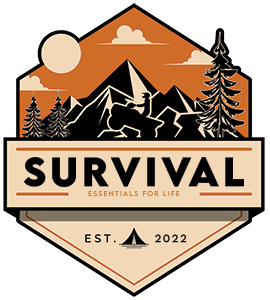Camping, hiking, and fishing are all fantastic ways to get away from the constant deluge of texts, work, and social media, but venturing into the great outdoors carries risks. In unfamiliar surroundings, getting turned around and lost can be easy, and without a well-stocked kit and plan of action, succumbing to the panic of this scary situation can be the difference between being found and…not. There are plenty of suggestions from seasoned outdoor enthusiasts out there, from expensive GPS devices to Bear Grylls styles of improvisation, but how can a newbie know which kernels to take to heart, and which to disregard? Here, we’ll outline a basic emergency survival kit to fit into your hiking pack.
Getting started
The most important piece of advice we can bestow upon you is this: always tell someone where you are going, how long you’ll be, and a window for when you’ll get back into contact with them. Many disappearances in the wilderness aren’t noticed for days or weeks after someone has vanished, simply because no one knew they had left, greatly impeding search-and-rescue efforts.
Plan your hike using maps of the area and understand the exertion levels of your route. This is especially vital to camping and fishing, as getting lost while carrying more equipment can be taxing on the body. Paper, waterproof copies of these maps, and having alternate routes planned in the event of problems can be incredibly helpful. A fully charged phone and portable charger should be standard in your kit.
With those things in mind, building an emergency wilderness survival kit can be intuitive and customized to your needs, so let’s jump in.
Sweet hydration!
A huge concern while outdoors is, rightly, water. Should your water run out upon getting lost, that should be one of your first orders of business. LifeStraw is unparalleled in its production of filters to make almost any water safe to drink and has a selection of water bottles to ensure carrying your water with you is easy. Any emergency wilderness kit needs a LifeStraw or a similar product.
Location
Finding your way out of the wilderness after becoming lost can mitigate the need for many items in this kit, and luckily, today a map and compass aren’t always necessary, though carrying them as a contingency is a good idea. For budgets between $180 and $600, a GPS unit can help you out of a tight spot. Familiarize yourself with a topographical map of the area and how to use a compass, just in case.
Temperature control
While more of a concern in the colder climates, warmer environments can also lead to problems internally, so having means of regulating your body temperature is critical. An extra pair of under-clothes, as well as Mylar Thermal Blankets and a way to keep the sun off your neck, can be instrumental in preventing hyper- or hypothermia.
Some Extras
- Having a form of waterproof fire-starting, such as lighters, waterproof matches, and fuel, can help in cooking and signaling for help.
- First-Aid and self-defense can work together, to keep woodland predators out of your camp and patch up minor injuries sustained. Know your limitations, and don’t pack more than you’re comfortable using.
- Glow sticks and flashlights can be crucial in signaling for help and keeping your bearings at night. Noisemakers, like a whistle, bells, or a panic button can assist in help finding you quickly as well.
Keeping trusted family and friends apprised of your hike or camping trip is a great first step, but next time you pack up for a trip, consider this list!
